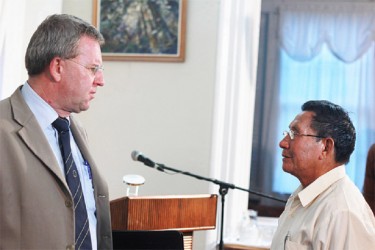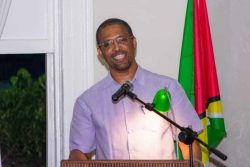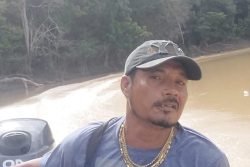A new publication has been launched to empower Amerindian communities through knowledge of their land rights.
‘Making an Amerindian Land Claim,’ which was produced as a result of a partnership between the Justice Institute Guyana Incorporated (JIG) and the European Union (EU), was launched at Moray House on Tuesday.
The publication is aimed at improving communities’ working knowledge of their rights, JIG Director Melinda Janki said, while noting that many Amerindian communities have little knowledge of how to use the 2006 Amerindian Act.
Since the law was enacted, Janki said, JIG has recorded that 20 communities have made land title claims under its provisions. She noted that there are currently 109 Amerindian communities in Guyana and only 11 of them do not have a land title.

Of the 98 with titles, she noted, there are about 40 communities who want extensions. “In Guyana, an Amerindian community can claim the land if they can show that they have occupied it for at least 25 years. Amerindian land [titling] in Guyana is simply a matter of occupation and use, culture and tradition,” Janki explained.
She said that it is important for communities to understand that their spiritual connection to the land was to translate into any land claims and when communities apply burial grounds and creeks and mountains which are revered and named needed to be specified in writing.
Janki also noted that literacy in English was not excusive to filing land claims. “Get the old people to tell you history. It does not matter if they cannot write. By law, the minister must listen when your elders speak. It does not matter if you do not have money to pay for a survey of the state land that you want, draw out your boundaries on a piece of paper. By law the minister must look at your sketches and drawings,” she said.
The JIG Director noted that the publication guide was designed to show the step by step process of using the Amerindian Act to make a land claim and is reflective of all rights under the Act. She noted that while working on the publication, it was discovered that many communities have little knowledge of how to use the Act.
Janki said this was what made the JIG project so important is that it would bring the Act to the communities and to show how to properly use it for the preservation of the Amerindian identity.
Head of the Delegation of the EU in Guyana Ambassador Robert Kopecký told Stabroek News that the law and implementation were two very different things. He said that the work being done by the JIG was imperative to representing indigenous communities within Guyana. He said that the publication guide was specific and descriptive of the legal rights that Amerindian communities hold individually and as collective village groups.
The EU has invested nearly $38 million in work being done by the JIG, which has been able to train 400 people in Amerindian communities on the Act. Working with toshaos and village councillors and collecting data has been one of the primary goals of the JIG.
Within the next week, the JIG will train another 14 persons using the publication guide.








